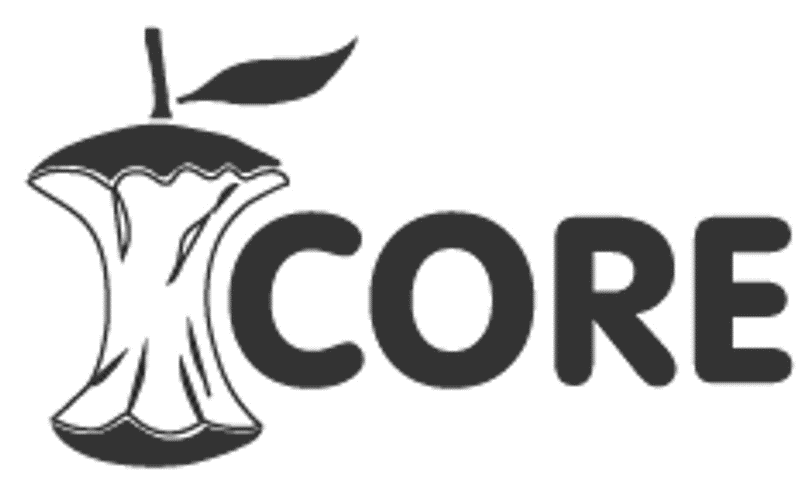Natural Inhibitors for Corrosion Protection of 6061 Aluminum Alloy: A Review
Abstract
Keywords
Full Text:
PDFReferences
S. Siengchin, “A review on lightweight materials for defence applications: Present and future developments,” Defence Technol., vol. 24, pp. 1–17, 2023, doi: 10.1016/j.dt.2023.02.025.
L. Josefson et al., “Committee V.3: Materials and fabrication technology,” in Proc. Int. Ship Offshore Struct. Congr., SNAME, 2022, doi: 10.5957/ISSC-2022-COMMITTEE-V-3.
M. A. Wahid, A. N. Siddiquee, and Z. A. Khan, “Aluminum alloys in marine construction: Characteristics, application, and problems from a fabrication viewpoint,” Mar. Syst. Ocean Technol., vol. 15, no. 1, pp. 70–80, 2019, doi: 10.1007/s40868-019-00069-w.
O. F. Hosseinabadi and M. R. Khedmati, “A review on ultimate strength of aluminium structural elements and systems for marine applica-tions,” Ocean Eng., vol. 232, Art. no. 109153, 2021, doi: 10.1016/j.oceaneng.2021.109153.
M. Georgantzia, M. Gkantou, and G. S. Kamaris, “Aluminium alloys as structural material: A review of research,” Eng. Struct., vol. 227, Art. no. 111372, 2021, doi: 10.1016/j.engstruct.2020.111372.
S. R. Kumar, M. Aravind, K. M. Rajkumar, and V. R. R. Vundavilli, “Investigation on corrosion behaviour of aluminium 6061-T6 alloy in acidic, alkaline and salt medium,” Mater. Today: Proc., vol. 45, pp. 1878–1881, 2021, doi: 10.1016/j.matpr.2020.09.079.
D. Wang, A. M. El-Shamy, L. Guo, S. Hu, and X. Wang, “Inhibitive effect of sodium molybdate on corrosion behaviour of AA6061 aluminium alloy in simulated concrete pore solutions,” Constr. Build. Mater., vol. 270, Art. no. 121463, 2021, doi: 10.1016/j.conbuildmat.2020.121463.
C. Verma, E. E. Ebenso, I. B. Obot, M. A. Quraishi, and A. S. Fouda, “An overview on plant extracts as environmental sustainable and green corrosion inhibitors for metals and alloys in aggressive corrosive media,” J. Mol. Liq., vol. 266, pp. 577–590, 2018, doi: 10.1016/j.molliq.2018.06.110.
A. A. Khadom, A. Y. Obayes, and M. A. Abdulwahab, “Theoretical evaluation of Citrus aurantium leaf extract as green inhibitor for chemical and biological corrosion of mild steel in acidic solution: Statistical, molecular dynamics, docking, and quantum mechanics study,” J. Mol. Liq., vol. 343, Art. no. 116978, 2021, doi: 10.1016/j.molliq.2021.116978.
A. A. Khadom et al., “Influence of apricot constituents as eco-friendly corrosion inhibitor for mild steel in acidic medium: A theoretical ap-proach,” J. Mol. Liq., vol. 347, Art. no. 117984, 2022, doi: 10.1016/j.molliq.2021.117984.
K. H. Rashid and A. A. Khadom, “3-Methoxypropyl-amine as corrosion inhibitor for X80 steel in simulated saline water,” J. Mol. Liq., vol. 319, Art. no. 114326, 2020, doi: 10.1016/j.molliq.2020.114326.
Y. Li, Y. Yu, Y. Liu, and S. Zhang, “Versatile 4,6-dimethyl-2-mercaptopyrimidine based ionic liquids as high-performance corrosion inhibitors and lubricants,” J. Mol. Liq., vol. 284, pp. 577–585, 2019, doi: 10.1016/j.molliq.2019.04.042.
R. Bender et al., “Corrosion challenges towards a sustainable society,” Mater. Corros., vol. 73, no. 11, pp. 1730–1751, 2022, doi: 10.1002/maco.202213140.
J. Wang, X. Liu, Z. Zhang, and Y. He, “Study of the corrosion behavior of Aspergillus niger on 7075-T6 aluminum alloy in a high salinity envi-ronment,” Bioelectrochemistry, vol. 129, pp. 10–17, 2019, doi: 10.1016/j.bioelechem.2019.04.020.
G. Chen et al., “Optimization of intrinsic self-healing silicone coatings by benzotriazole loaded mesoporous silica,” Surf. Coat. Technol., vol. 421, Art. no. 127388, 2021, doi: 10.1016/j.surfcoat.2021.127388.
X. Li et al., “Versatile nonfluorinated superhydrophobic coating with self-cleaning, anti-fouling, anti-corrosion and mechanical stability,” Colloids Surf. A: Physicochem. Eng. Asp., vol. 642, Art. no. 128701, 2022, doi: 10.1016/j.colsurfa.2022.128701.
J. Xie et al., “Researches on corrosion behaviors of carbon steel/copper alloy couple under organic coating in static and flowing seawater,” Prog. Org. Coat., vol. 166, Art. no. 106793, 2022, doi: 10.1016/j.porgcoat.2022.106793.
S. Habib, R. A. Shakoor, and R. Kahraman, “A focused review on smart carriers tailored for corrosion protection: Developments, applica-tions, and challenges,” Prog. Org. Coat., vol. 154, Art. no. 106218, 2021, doi: 10.1016/j.porgcoat.2021.106218.
M. H. Nazari et al., “Nanocomposite organic coatings for corrosion protection of metals: A review of recent advances,” Prog. Org. Coat., vol. 162, Art. no. 106573, 2022, doi: 10.1016/j.porgcoat.2021.106573.
J. Erkmen, “Patterns in hammertone paints,” Pigment & Resin Technol., vol. 45, no. 6, pp. 456–462, 2016, doi: 10.1108/PRT-07-2015-0067.
L. L. Liao et al., “Corrosion protection for mild steel by extract from the waste of lychee fruit in HCl solution: Experimental and theoretical studies,” J. Colloid Interface Sci., vol. 520, pp. 41–49, 2018, doi: 10.1016/j.jcis.2018.02.071.
E. de Britto Policarpi and A. Spinelli, “Application of Hymenaea stigonocarpa fruit shell extract as eco-friendly corrosion inhibitor for steel in sulfuric acid,” J. Taiwan Inst. Chem. Eng., vol. 116, pp. 215–222, 2020, doi: 10.1016/j.jtice.2020.10.024.
G. Palanisamy, “Corrosion inhibitors,” in Corrosion Inhibitors, London, U.K.: IntechOpen, 2019, doi: 10.5772/intechopen.80542.
M. En-Nylly et al., “Performance evaluation and assessment of the corrosion inhibition mechanism of carbon steel in HCl medium by a new hydrazone compound: Insights from experimental, DFT and first-principles DFT simulations,” Arab. J. Chem., vol. 16, no. 6, Art. no. 104711, 2023, doi: 10.1016/j.arabjc.2023.104711.
Z. Song et al., “Inhibition performance of extract reinforcement corrosion inhibitor from waste Platanus acerifolia leaves in simulated con-crete pore solution,” Case Stud. Constr. Mater., vol. 20, Art. no. e02992, 2024, doi: 10.1016/j.cscm.2024.e02992.
A. Dehghani et al., “Experimental complemented with microscopic (electronic/atomic)-level modeling explorations of Laurus nobilis ex-tract as green inhibitor for carbon steel in acidic solution,” J. Ind. Eng. Chem., vol. 84, pp. 52–71, 2020, doi: 10.1016/j.jiec.2019.12.019.
D. Kesavan, M. Gopiraman, and N. Sulochana, “Green inhibitors for corrosion of metals: A review,” Chem. Sci. Rev. Lett., vol. 1, no. 1, pp. 1–8, 2012.
M. Edraki and M. B. Keivani, “Eco-friendly inhibitors for corrosion protection of metallic surfaces: A mini review,” Asian J. Green Chem., vol. 4, pp. 283–296, 2020.
B. Tan et al., “Papaya leaves extract as a novel eco-friendly corrosion inhibitor for Cu in H₂SO₄ medium,” J. Colloid Interface Sci., vol. 582, pp. 918–931, 2021, doi: 10.1016/j.jcis.2020.08.093.
M. S. Al-Otaibi et al., “Corrosion inhibitory action of some plant extracts on the corrosion of mild steel in acidic media,” Arab. J. Chem., vol. 7, pp. 340–346, 2014, doi: 10.1016/j.arabjc.2012.01.015.
I. G. A. Arwati et al., “Effect of chitosan on the corrosion inhibition for aluminium alloy in H₂SO₄ medium,” Energies, vol. 15, no. 22, Art. no. 8511, 2022, doi: 10.3390/en15228511.
K. Ding et al., “Study on the classification of seawater corrosivity of typical sea areas in China,” Corros. Rev., vol. 38, no. 4, pp. 323–330, 2020, doi: 10.1515/corrrev-2020-0037.
I. G. A. Arwati et al., “The influence of temperature and electrophoresis deposition green inhibitor on bipolar plate AA5052 in sulfuric acid medium,” Sains Malays., vol. 49, no. 12, pp. 3169–3177, 2020, doi: 10.17576/jsm-2020-4912-28.
R. Xia, J. Chen, and Y. Garbatov, “Deterioration of marine offshore structures and subsea installations subjected to severely corrosive en-vironment: A review,” Mater. Corros., Early Access, 2024, doi: 10.1002/maco.202314050.
Y. Li et al., “Research progress on organic corrosion inhibitors for marine corrosion protection,” Fine Chem., vol. 40, pp. 1161–1175, 2023.
Q. Wang et al., “Application of biomass corrosion inhibitors in metal corrosion control: A review,” Molecules, vol. 28, no. 6, Art. no. 2832, 2023, doi: 10.3390/molecules28062832.
I. G. A. Arwati et al., “Electrophoresis deposition Arabic gum effect on aluminium 5052 reduce corrosion,” Sains Malays., vol. 48, no. 2, pp. 401–406, 2019, doi: 10.17576/jsm-2019-4802-18.
H. S. Magar, R. Y. A. Hassan, and A. Mulchandani, “Electrochemical impedance spectroscopy (EIS): Principles, construction, and biosens-ing applications,” Sensors, vol. 21, no. 19, Art. no. 6578, 2021, doi: 10.3390/s21196578.
M. P. Asfia, M. Rezaei, and G. Bahlakeh, “Corrosion prevention of AISI 304 stainless steel in hydrochloric acid medium using garlic extract as a green corrosion inhibitor: Electrochemical and theoretical studies,” J. Mol. Liq., vol. 315, Art. no. 113679, 2020, doi: 10.1016/j.molliq.2020.113679.
B. Nie et al., “Surface morphology characteristics and mechanical properties of corroded cold-formed steel channel sections,” J. Build. Eng., vol. 42, Art. no. 102786, 2021, doi: 10.1016/j.jobe.2021.102786.
A. C. Lazanas and M. I. Prodromidis, “Electrochemical impedance spectroscopy—a tutorial,” ACS Meas. Sci. Au, vol. 3, no. 3, pp. 162–193, 2023, doi: 10.1021/acsmeasuresciau.2c00070.
M. Hou et al., “Improving the cavitation corrosion resistance of 6061 aluminum alloy by anodizing,” Electrochim. Acta, vol. 503, Art. no. 144890, 2024, doi: 10.1016/j.electacta.2024.144890.
L. Mulky and P. Rao, “Tribo-corrosion control with molecules of bio-origin: Experimental studies and theoretical insights,” J. Bio-Tribo-Corros., vol. 10, no. 3, Art. no. 46, 2024, doi: 10.1007/s40735-024-00846-0.
J. Haque et al., “Alocasia odora extract as environmentally benign corrosion inhibitor for aluminum in HCl*,” Moroccan J. Chem., vol. 11, no. 4, 2023, doi: 10.48317/IMIST.PRSM/morjchem-v11i04.41618.
M. Lavanya, V. R. Murthy, and P. Rao, “Protection of material applied in heat exchanger under submerged jet impingement condition with Boswellia serrata: Electrochemical approach,” J. Appl. Electrochem., vol. 52, no. 6, pp. 953–962, 2022, doi: 10.1007/s10800-022-01686-x.
N. R. J. J. Hynes et al., “Green corrosion inhibition on carbon-fibre-reinforced aluminium laminate in NaCl using Aerva lanata flower ex-tract,” Polymers, vol. 14, no. 9, Art. no. 1700, 2022, doi: 10.3390/polym14091700.
Unnimaya et al., “Glutathione as green corrosion inhibitor for 6061Al-SiC(p) composite in HCl medium: Electrochemical and theoretical investigation,” J. Solid State Electrochem., vol. 27, no. 1, pp. 255–270, 2023, doi: 10.1007/s10008-022-05315-7.
B. P. Charitha and P. Rao, “Pectin as a potential green inhibitor for corrosion control of 6061Al–15% (V) SiC(P) composite in acid medium: Electrochemical and surface studies,” J. Fail. Anal. Prev., vol. 20, no. 5, pp. 1684–1696, 2020, doi: 10.1007/s11668-020-00973-z.
A. Khan et al., “Frontiers and challenges in electrochemical corrosion monitoring: Surface and downhole applications,” Sensors, vol. 20, no. 22, Art. no. 6583, 2020, doi: 10.3390/s20226583.
S. X. Cao et al., “Study on the corrosion behavior and mechanism of 6061 aluminum alloy under alternating current interference in 3.5% NaCl solution,” J. Mater. Eng. Perform., vol. 34, no. 5, pp. 3692–3705, 2025, doi: 10.1007/s11665-024-09357-y.
A. F. Septiano, S. Susilo, and N. E. Setyaningsih, “Analisis citra hasil scanning electron microscopy energy dispersive X-ray (SEM EDX) kom-posit resin timbal dengan metode contrast to noise ratio (CNR),” Indones. J. Math. Nat. Sci., vol. 44, no. 2, pp. 81–85, 2021, doi: 10.15294/ijmns.v44i2.33143.
A. Yu. Kharin, “Deep learning for scanning electron microscopy: Synthetic data for the nanoparticles detection,” Ultramicroscopy, vol. 219, Art. no. 113125, 2020, doi: 10.1016/j.ultramic.2020.113125.
A. F. Septiano and H. Sutanto, “Synthesis and characterization of resin lead acetate composites and ability test of X-ray protection,” in J. Phys.: Conf. Ser., vol. 1918, no. 2, Art. no. 022055, 2021, doi: 10.1088/1742-6596/1918/2/022003.
DOI: http://dx.doi.org/10.22441/ijimeam.v7i3.34713
Refbacks
- There are currently no refbacks.
Copyright (c) 2025 Maulana Witanta, I Gusti Ayu Arwati, Edy Herianto Majlan

This work is licensed under a Creative Commons Attribution-ShareAlike 4.0 International License.
INDEXED IN
International Journal of Innovation in Mechanical Engineering and Advanced Materials (IJIMEAM)
Published by:

Universitas Mercu Buana
Program Studi S2 Teknik Mesin
Jl. Meruya Selatan No. 1, Kembangan, Jakarta 11650, Indonesia
Phone/Fax. (+6221) 5871335
Email [email protected]
Homepage mercubuana.ac.id/magister-teknik-mesin

This work is licensed under a Creative Commons Attribution-ShareAlike 4.0 International License.




















